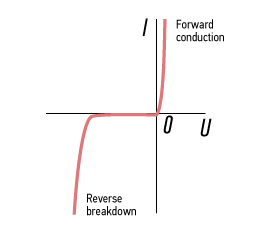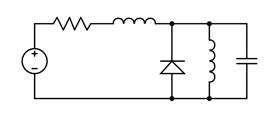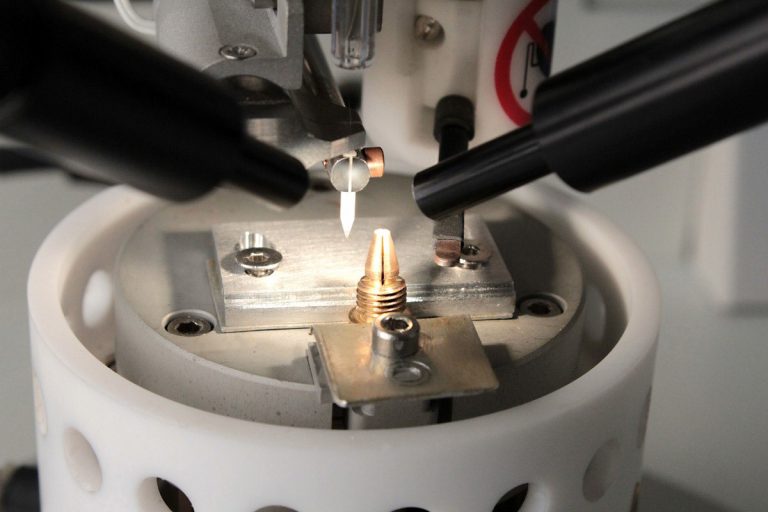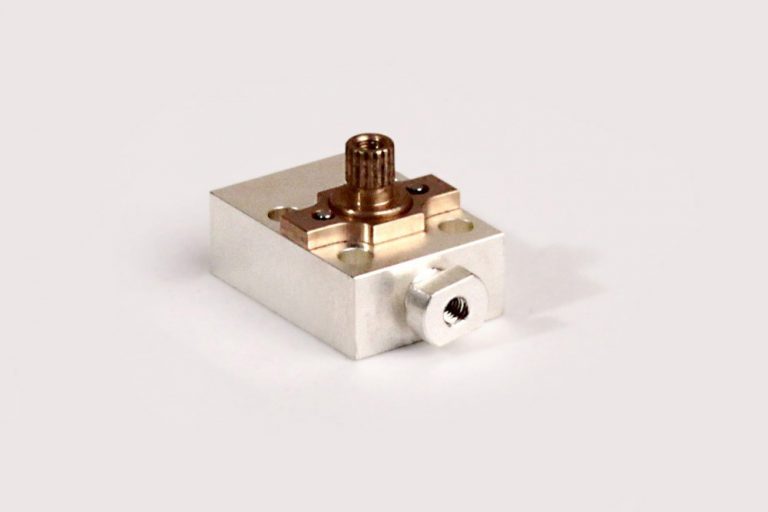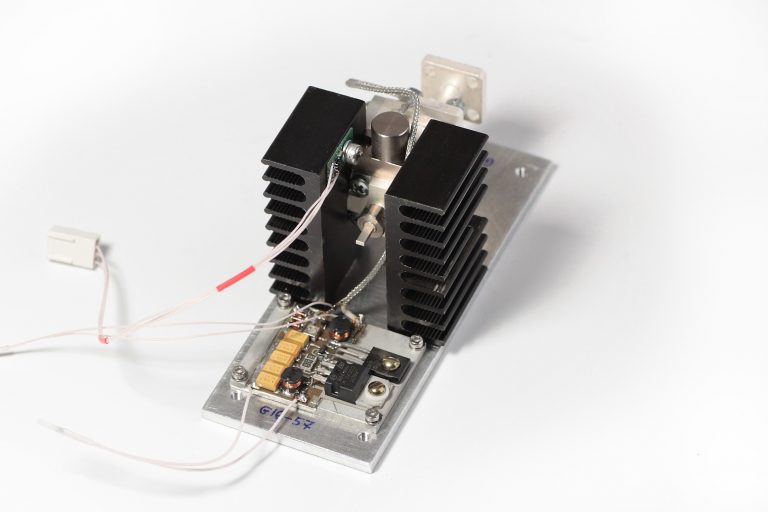IMPATT diodes
-

High power
-

Power stability
-

Fixed frequency
-

Compact
-

Low cost
-

Long life
The Impact ionization Avalanche Transit Time (IMPATT) diode is a type of high-power semiconductor diode utilized in microwave applications at high frequencies, from several GHz to several hundred GHz. Having negative resistance, IMPATT diodes are naturally used as oscillators in high-frequency signal generation. However, one of the key advantages of IMPATT diodes over the other microwave diodes is their relatively high power capability. On a historical note, IMPATT diode is also called ‘Read’ diode in honor of W.Т. Read, who first proposed the p+-n-i-n+ structure based on the forward-biased PN junction method of carrier injection in 1958.
IMPATT diode operating principles
IMPATT generator circuit
Fig. 2 shows a general circuit configuration for the IMPATT generator. To ensure stable and reliable operation, the diode is driven by a supply source through a current-limiting resistor and an RF choke to provide DC isolation from the radio-frequency signal. In order to sustain oscillations at a specified frequency, the IMPATT diode is typically integrated into a tuned resonator circuit, such as a waveguide cavity.
Compared to the other kinds of microwave negative-resistance diodes, with the IMPATT based generators it is possible to achieve much higher output power levels. IMPATT generators have also proved to be some of the most efficient and cost-effective high frequency and high power sources with remarkably long life of stable and reliable operation.
